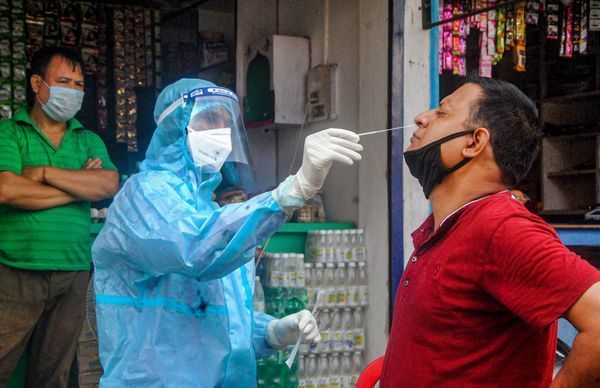An
Indian-origin scientist is among a group that has developed the prototype for a
rapid COVID-19 test, which uses simple and portable instruments for reading the
results with a smartphone within 30 minutes.
This will
eliminate the need for samples to be sent to a lab for testing and might pave
the way for point-of-care diagnosis.
A study
published in the journal PNAS claims that the new technology could help eradicate
long waiting lists for COVID-19 test results by removing bottlenecks in
supplies and laboratory personnel.
Also Read: Sanofi halts trial of Covid-19 drug after tests
“If such a
device and test were available, we could test for COVID-19 at public events,
auditoriums, large gatherings and potentially even at home for self-testing.
The results could be sent back to the appropriate public health system for
coordination,” said Rashid Bashir, a professor of bioengineering at the
University of Illinois, Urbana-Champaign in the US.
One of the
most common testing methods involves healthcare workers taking a sample from
patients with a long nasopharyngeal swab, which is put into a substance called
viral transport media and send to a lab for extracting, isolating and
multiplying the viral genetic sequence, scientists said.
A number of
temperature fluctuation cycles, specialised equipment and trained personnel are
required for the multiplication process of the viral RNA, called RT-PCR, noted
Brian Cunningham, co-author of the study.
The current
research involves scientists using a much simpler method to analyse the
transport media, known as LAMP, which bypasses the RNA extraction and
purification steps.
“LAMP only
needs one temperature, 65 C, so it is much easier to control,” Anurup Ganguli,
the first author of the study, said.
“Also, LAMP
works more robustly than PCR, especially when there are contaminants in the
test sample. We can just briefly heat the sample, break open the virus, and
detect the genetic sequence that specifically identifies SARS-CoV-2,” Ganguli
said.
Also Read: China says it rolled-out experimental COVID-19 vaccine in July
Comparison
of the LAMP assay with PCR shows that the results agree, following which the
researchers documented the sensitivity and specificity of the LAMP test.
The assay was
then incorporated onto a 3D-printed cartridge that has two input slots for
syringes, one each for the sample-containing viral transport media and the LAMP
chemicals. The components of the two syringes react within the cartridge upon
injection.
“We use
modern, high speed additive manufacturing to make these cartridges. The entire
thing can be quickly scaled up to hundreds of thousands of tests,” said another
co-author of the study, Bill King.
“Production
scale-up is typically the biggest obstacle for commercial applications of
microfluidic cartridges, and we can overcome that obstacle using this new
approach. Modern additive manufacturing is elastic and scalable, and it can be
ramped up very quickly compared with legacy manufacturing technologies,” King
said.
The researchers
said that the cartridge can be inserted into a small, hand-held instrument with
a heating chamber that can heat it up to 65 degrees Celsius for the duration of
the reaction and a smartphone can then read the results.
A fluorescent
light will signal a positive test in about 30 minutes, they said.
“The reader
illuminates the liquid compartments with light from blue LEDs, while the
phone’s rear-facing camera records a movie of the green fluorescent light being
generated,” Cunningham explained.
The scientists
are currently researching whether they can make the test work with saliva, eliminating
the need for nasopharyngeal swabs.







